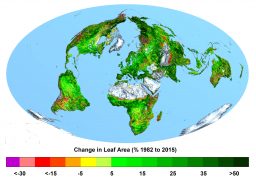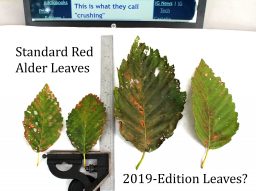OTHERSCIENCE STORIES: The Pleistocene Murders, Part 7
Friday , 4, October 2019 Forrest Bishop History, Otherscience Stories, War 10 Comments [Part1] …a recurring theme… first the new life spreads out across the surface, there to ASCEND into the space above.
[Part1] …a recurring theme… first the new life spreads out across the surface, there to ASCEND into the space above.
Judgment Day
Before the last Ice Age began, a new kind of creature, the one we call Man, came into the world somehow. We don’t know quite how, scientifically, but there he is. He was small and weak compared to the mighty giants that walked the Earth in those days, a bit like the mammals at the feet of the dinosaurs.
With the passing of the glorious beasts during the last and worst Ice Age, the table was cleared around the world for Man to come occupy the land. We had been stymied for centuries; we could not take their battered planet from them.
Our quiet heroes learned how to eat the grasses too, not by ruminating like an animal, only by cooking them with the fires their ancestors had tamed. This was probably first tried out of desperation, when the game was gone and the famines began. The C3 and C4 grasses that had replaced the ancient forests became the basis of the Agricultural Revolution and the rise of our uncanny civilizations. First we broke the grass, only then could we break the bread.
One thing led to the next, the next could not have happened otherwise.
First must come the horrific Pleistocene Murders, only then the astounding Ascent of Man.
As the planet warmed up the atmospheric CO2 level eventually rose again. Not by much, just barely above the C3-C4 redline which had led to the mass extinctions, where it remained for the next few thousand years. The increased warmth, carbon dioxide, and humidity allowed the forests to advance and recover.
Farms and towns were created even as the last of the ice sheets were retreating to the North and the Flood waters still rising. Shepards could now herd their flocks without having to fend off packs of unstoppable predators.
Then, a few lifetimes ago, our quiet heroes showed us how to wrench the coal from the ground and turn it to the power of the Industrial Revolution, preparing the way for the human population to increase many times over. In that process, the Carbon in the fossil fuel was burned to CO2, enriching Earth’s atmosphere once again.
The Earth is getting greener now, all over the world. Our ascended satellites watch it growing, each decade more lush than the one before. The total leaf coverage on Earth is already considerably more than it was before the Industrial Revolution. Annual growth rings on many trees can now be measured in centimeters instead of millimeters.
Because of this accelerating CO2 enrichment, food for over seven billion people is now grown on less land than it took to feed three billion just half a century ago. More land is becoming available for wildlife. The real hockey stick graphs are the ones that show the phenomenal increases in food production. The Green Revolution, though real enough, is the smaller part of this process. All of it has unfolded in our era of rising atmospheric carbon dioxide.
One thing led to the next, the next could not have happened otherwise.
First must come the astounding Ascent of Man, only then the wondrous Greening of the Earth.
The 400 ppm CO2 level that we have achieved in just the past few years is an important crossover point. What that means for food production is that the hockey stick graph for corn output- the biggest crop on the planet- is now going to flatline, while wheat and all the other C3 crops continue to rise. There is more to this, of course.
As the atmospheric Carbon level rises, there are innumerable tipping points, all of which depend on local conditions. We may see a resurgence in the number of Acacia trees very soon, if it is not occurring already. By the all-important C3-C4 growth-rate chart, the C4 grassland underneath them is right now right at the limit of how much Carbon it can scoop out of the air, at least on windy days. The new Acacia trees can already become established much more easily, since they are not as starved of Carbon when they are young and short.
You may see such wondrous sights in your own front yard these days. Look at the solidity of the trees and bushes now, especially alongside major roads and freeways. Do branches now sprout out of tree trunks lower down? Are your plants growing bigger and faster? Are shrubs and bushes popping up all over the range lands of the American Southwest? Seen any forests taking over grasslands in Idaho, Wisconsin, coast to coast and around the world?

As I am writing this, a UFO lands just outside the front door. It turns out to be a gigantic version of a Red Alder leaf, like something out of a science-fiction movie. It caught my attention because I had never seen anything like it before. Maybe it’s a new thing on the alder scene.
This amazing tree, which can now grow to more than 30 cm diameter and 20 m height at 10 yo, higher than the growth rates of the 1980’s, took the liberty of bolting up its very own Nitrogen-fixing factories. That might make it a key tipping-point species because it isn’t held back by Nitrogen deprivation. The reason they lean over is so that they can fall onto the grass and provide the micro-environment and nutrients for recolonization. They are shock troops of the ongoing arboreal reconquista.

For building a plant, carbon dioxide is exactly as important as water. Six of one, half dozen of the other. Even Steven. It is not a “fertilizer” or a “pollutant” anymore than water is.
The climate warriors have long been aware of the Greening of the Earth due to our CO2 emissions. It is buried in their massive battle plans, filed under ‘Carbon Sink, Land’. It is a fact in evidence without rebuttal, unless they care to equate Life on Earth with a tumor. They are judged accordingly.
The worldwide, accelerating growth has already become so immense that it is reducing their estimates of present and future atmospheric carbon-dioxide levels. The plants are eating it up.
Quite a number of people around the world are already taking advantage of the increasing plant productivity and planning for a more abundant future.

Rivers of iron horses building canyons made of trees. The young trees have grown into thick walls, forming a micro-environment that boxes in the CO2 coming from the mobile CO2 generators. Heavier feedings are scheduled daily, M-F, during slow-motion hour.
Naturally enough, along with all this new plant growth come more of the animals that like to eat the plants as well as more of the animals that like to eat the animals that like to eat the plants. This is to be expected.
If the CO2 concentration were to increase to several times the current paltry level (400+ ppm), we might see several times the current amount of Life on Earth. That is equivalent to adding several more Life-on-Earth’s right on to the existing one, some serious terraformation. Our descendants may wish to re-create the conditions of The Summer of Life (say, 2000 ppm), at least for the warmer latitudes. Someday they may strip mine the limestone– that was laid down in The Summer of Life- using undying self-replicating machinery that can continuously replenish the Earth’s atmosphere without further attendance. Most unfortunately, adding CO2 can’t warm the globe up at all, so some other means will have to be used for temperature regulation.
It may be that the icecaps themselves were capping off part of the subterranean Carbon supply. It also may be that the colder air and water temperatures restricted its evaporation out of the oceans, just a little bit, just enough for the plants on the land to overuse what was in the air. We do know for sure that the vegetation of the world can vacuum the Carbon out of the planet’s atmosphere at a far higher rate- and an accelerating rate- than it can be replenished. That fantastic fact of the annual CO2 decline tells.
Another Just So mystery. When the CO2 level dropped to 180 ppm during the Ice Age, why did it stop there? Why not go on down to 140 ppm, or 100 ppm? Then there would have been no more horses, elephants, giraffes, etc. at all. Why stop the Pleistocene Murders only after clearing the table just enough for Man?
No one knows where all of the precious Carbon comes from or when the sources might shut down again. They might burble along for thousands of years, or they might close up shop next week. We don’t know, anymore than we know when the next Ice Age will hit or how severe the freeze will be.
Compared to the permanent devastation that the very next drop in atmospheric Carbon could cause, an all-out nuclear war, or even an asteroid strike, as in one of the dinosaur-extinction stories, are mere blips on the radar screen. A severe enough drop in aerial carbon dioxide would mean the extinction of all higher life on land, great and small. Without this stuff of life the Earth would revert to conditions worse than they were a billion years ago. Life trapped in the oceans would go on for some time after that, freewheeling off the last remains of available Carbon, but no matter how advanced the sea creatures become they will never be able to build a fire or reach for the stars. After the oceanic creatures pass away there would be no meaningful life anywhere in the Universe that we know of.
In order to continue to exist and to prosper, Life on Earth needs one more trick, the one thing that not one of the marvelous Inventions of all the eons past had ever been able to accomplish. There has to be some way, somehow, to wrench the locked Carbon up out of the earth, and throw it back to the sky.
We are that way.
We spread all across the continents and from pole to pole;
drive mighty iron horses beyond before;
pluck new ideas from another where
our giant swimming things swim through the sea,
giant flying things fly through the air:
make the whole earth green again.
Ascend to places above like the second stage of a rocket.
********
The Pleistocene Murders
Part 1, Introduction
Part 2, The Spring of Life
Part 3, The Summer of Life
Part 4, The Autumn of Life
Part 5, The Winter of Life
Part 6, The Carbon Wars
Part 7, Judgment Day
********
Part 7 Notes
Iconic Acacia Tree.
Aka Gum Arabic Tree. Is a nitrogen fixing tree like Red Alder. Considered an invasive species in Australia. Many invasive species are nitrogen fixers. Has been “controversially” reclassified out of the Acacia genus, to Vachellia nilotica with nilotica referring to the Nile River. Searching ‘Vachellia nilotica’ brings images of these trees as round-shaped, with leaves closer to the ground. Searching ‘Iconic Acacia Tree’ brings up the flat-top version out on the Savannah. So the “Iconic” shape only shows up in C4 (?) grasslands- it’s not how the tree grows normally. This supports the theory presented in Part 6. The Iconic-version leaves are usually (?) much higher up than giraffes can reach, as shown in the search images, so that idea can’t work. This is also a C3-C4 crossover-point tree of interest. Look for “Iconic Acacia Trees” becoming more round-shaped. The grazers eat the seeds that drop, then deposit them elsewhere along with a convenient fertilizer patty. That’s why they are found singly. So this nitrogen-fixing tree, and its animals, is like a sentinel, standing by to reforest the Savannah when CO2 conditions improve. Then other trees can grow up around and after them, just as the Alder prepares the ground for the conifers. -10/16/2019
Red Alder.
“The leaves are ovate, 7 to 15 centimetres (2.8 to 5.9 in) long,” according to Infogalactic. So the 9″ leaf(s) is 150% longer and 225% more leaf area than the known largest. The largest man was 9′ tall, so this is akin to discovering a man 13.5′ tall. Red Alder is top of the charts in fixed-N production per hectare. The leaves are also N-rich, so bigger leaves means even more fixed N. They are definitely a key, Greening-Accelerator species, since Nitrogen deprivation is a major hold-up for reforestation -10/16/2019
The giant Red Alder leaves appear to be growing on new branches. There aren’t that many of them; most of the leaves are still the “Standard” size. That would make sense because the vascular systems of the old branches aren’t big enough to handle the increases flows. So we’ll look for new Red Alder trees that have giant leaves all the way. The bigger leaves in this picture are all growing on a new branch that sprouted lower down on the old trunk, probably in 2019 judging by the size and bark. They are about 6″ long. The perspective is exaggerating the difference. -10/17/2019
There is a young branch starting at about 12′, suckering off the base of a dying branch. It appears to be 3-4 yo. Its upper parts, at about 24′, have some of the larger leaves. This supports the idea that new branches with enlarged vascular systems are required for the Giant Leaf Red Alder. The original 9″ leaf remains the largest found to date, though several others come close. -10/23/19
New world record. 9-1/4″ leaf. 13 panels left, 12 panels right, so still a scaled-up version of the standard leaf in that regard. Found in dry conditions. Weight: 5.5 gm as found. Standard leaf weighs about 1.5 gm, so over 300% as massive. The leaf is adding more structure to compensate for square cube? Heavy “V”. Witnessed a 7-1/2″ leaf fall from the suspected branch. Weight: 3.5 gm. -10/25/19
Cool post! However, it might be best for the category/tag-challenged if you included a hyperlinked list of the preceding articles at the end of this post. Just a suggestion.
Fascinating and insightful story, thanks! Links from Part 4 to 5 and so on through the end of the series would be helpful.
-
Forrest Bishop says:
You’re very welcome, Hans. I’ve added more explicit links from Part 4 on.
Notice the Chinese have made Global Greening a national priority. They don’t waste time on Global Warming.
The satellite data is probably from the visible, UV, and IR bands, idk. There may be a demand for ground-based monitoring (plant solidity, growth rates, and type) in RF, if this is technically possible. Our quiet heroes find their own uses for things.
-
Hans Schantz says:
I know aerial radar surveys have been used to estimate forest biomass, but of course they are necessarily limited to the immediate regions under an aircraft’s flight path. The satellite surveys really show what’s happening on a global scale.
-
I’ve been reading this series with utter fascination.
I came screeching to a skeptical halt on the leaf size issue, however. New branches with giant leaves don’t mean anything except that a relatively fast-growing tree was making time while the sun shines and the water’s flowing. Subsequent generations of leaves on that same branch will decline to average size, and a new set of prodigious leaves will show up on a handful of new sprouts each year (and so on). I’ve seen this in poplars, maples, birches, etc.
If leaves are getting bigger on average, that’s a different kettle of fish. It could very well be.
Overall, as a reasonably well-informed layman, I’m on board with you. This was an enlightening journey. Great stuff.
-
Forrest Bishop says:
Ing, please to be skeptical. I’ll be addressing these objections in the next Otherscience Story, which does end with a question mark. The prolific giant-leaf-producer branch is maybe 4 yo; the tree it is on is maybe 50 yo. It didn’t do this before this year, which is the opposite of declining to the average size. And then there’s those other Red Alder trees, far away, maybe 10 yo…
Thanks for your excellent comment.
Hey Peter – really enjoyed your story. Would you care to talk about it on a podcast? Please reach out!
Sorry, your name is Forrest, not Peter. My mistake! Hope to speak with you all the same.